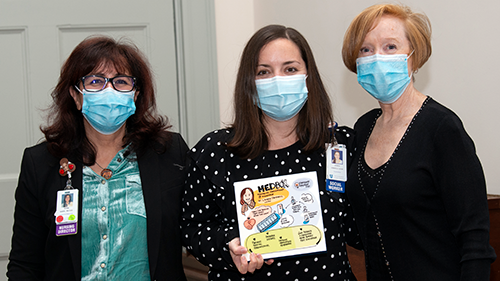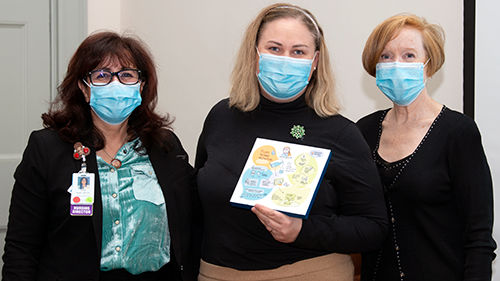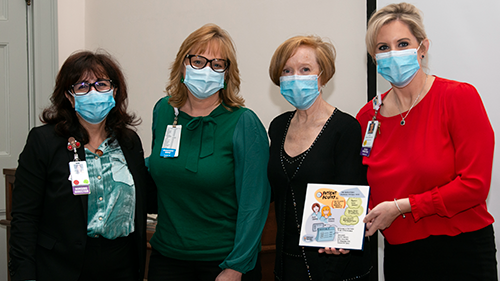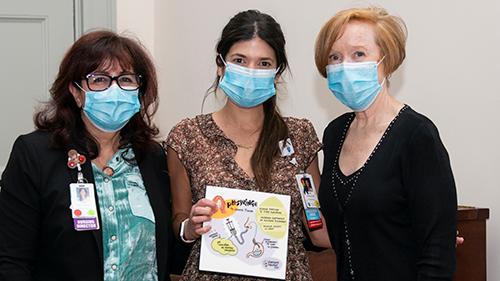
Care Team Communication and Patient Communication Category
Lauren DeMarco, MSW, LICSW, ACHP-SWAs a social worker on Lunder 9, Lauren noticed that many patients leave the hospital on a much more complex medication regimen than when they arrived. This leads to frequent medication errors, including missed doses of vital medicines, increased symptoms, and potential re-admission. To address this pain point, Lauren came up with a multi layered solution for medication management at discharge. The concept behind MedBox is to keep a stock of pill boxes and teach patient/families upon discharge on how to fill them. This could be especially helpful with time-limited meds (five-day courses, seven-day courses, etc.) or essential meds that must be taken every day. Many patients simply cannot afford these helpful tools. In addition to pill boxes, a text messaging system will be utilized to message patients when it's time for them to take their medication.

Capacity Management Category
Molly Traynor, RNAs a nurse on Ellison 12, Molly noticed that patients are not aware of fluid restrictions. They are unable to see how much fluid they have consumed versus how much they have left. As a result, Inaccurate I&Os keep patients in the hospital longer than they need to be. To address this pain point, Molly came up with a solution that would indicate how much fluid patients have taken in versus how much they have left. The Fluid Intake Monitor is an application that would be available on existing iPads in patient rooms. It will have a touch screen so that staff can easily enter data for how much fluid was consumed by a patient. Data from the Fluid Intake Monitor would feed into Epic.

Complexity of the Clinical Environment Category
Julie Cronin, RN, DNP, OCN, NE-BC and Kristen Nichols, BSN, RN, OCNAs nurses on the Yawkey Infusion Unit, Julie and Kristen believe that nurse/patient assignments that are well balanced based on patient acuity are vital for patient safety, nurse satisfaction and the patient experience. From their work on the front lines, they also know that cancer treatments are becoming more complex. There is no evidence based, valid and reliable acuity tool for ambulatory oncology infusion units that can inform adequate nurse staffing and balanced patient assignments. To address this pain point, Julie and Kristen are developing a patient acuity tool for the ambulatory oncology infusion unit. This tool will assist in providing data to ensure appropriate nurse/patient assignments based on patient acuity and to identify appropriate staffing/resource needs to ensure registered nurse full time equivalents are adequate based on identified criteria (vs. volume only metrics).

Other Ideas Category
Hanna Plager, BSN, RNHanna created the concept of a syringe that has a pH strip in it to be used to check gastric tube placement prior to routine care. Syringes are already used to check residual and administer nutrition, medications, and fluids. Why not also use them to check pH? The technology is available, but the equipment isn’t. Research shows that if gastric contents are <5.5, there is evidence that the tube is in the right place. By creating a syringe with a pH strip, nurses, providers, and hospital wide admitting services would benefit. This syringe could help support the safe delivery of fluids, medication and nutrition and avoid complications. When nurses are then asked to check placement every shift, they will be given empirical data that the tube is in the right place. The syringe could also help avoid unnecessary radiation and ease workload on x-ray technicians. Lastly, it could allow for fewer delays in care and therefore quicker discharge.